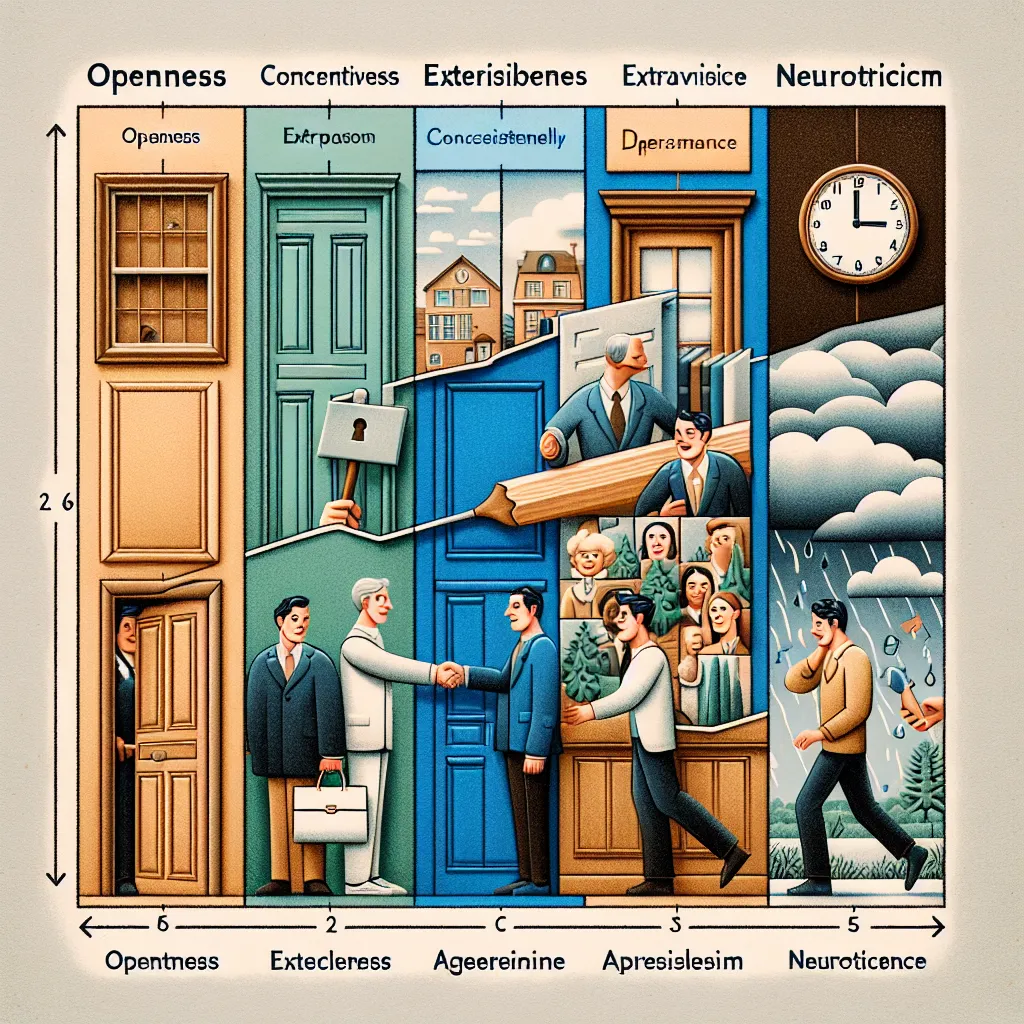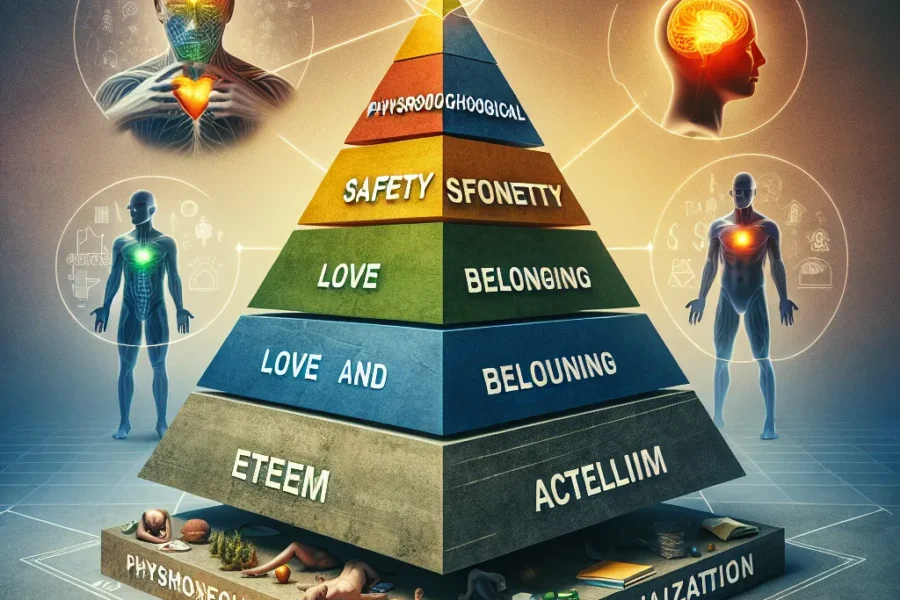Understanding the Big Five Personality Traits
The Big Five Personality Traits is a widely endorsed model that encapsulates five different dimensions of human personality: Openness to Experience, Conscientiousness, Extraversion, Agreeableness, and Neuroticism—collectively known by the acronym OCEAN. This model has become an integral part of psychological studies and assessments, serving as a framework for understanding the various ways in which individuals think, behave, and interact with the world around them. In this article, we will delve deeply into each of the Big Five traits, examine how they influence personal and professional life, and explore how an awareness of these traits can lead to personal growth and improved interpersonal relationships.
Openness to Experience is one of the most compelling traits within the Big Five. This trait features characteristics such as a wide range of interests, an active imagination, an appreciation for art and beauty, and open-mindedness toward new experiences and diverse viewpoints. People high in Openness are typically more curious about the world, more creative and more likely to engage in unconventional thoughts. Those with lower scores on Openness may prefer sticking to traditional ways, showing a preference for familiarity over novelty.
Conscientiousness is the trait that encompasses self-discipline, meticulousness, and a strong sense of duty. People high in Conscientiousness tend to be organized, thorough, and goal-oriented, often planning ahead and striving for high achievement. Conscientious individuals are usually dependable and make reliable employees and partners. On the other hand, those with a low Conscientiousness score might struggle with maintaining schedules and may come across as impulsive or careless.
Extraversion, one of the most observable personality traits, involves an orientation of one’s interests and energies toward the outside world and people, rather than inward. Extraverted individuals are often perceived as energetic, enthusiastic, sociable, and assertive. They usually enjoy social situations and crave the company of others. Meanwhile, introverts—those scoring low on Extraversion—may prefer solitary activities and feel drained after extended social interaction, though they should not be mistaken for shy individuals, which is a common misconception.
Agreeableness reflects characteristics like trust, altruism, kindness, affection, and other pro-social behaviors. Highly agreeable people are typically cooperative and value getting along with others. They are often considerate, friendly, and willing to compromise. Conversely, individuals with low Agreeable scores may be more competitive or challenging in their dealings with others, showing a lesser concern for harmony in their relationships.
Neuroticism is a trait characterized by emotional instability, anxiety, moodiness, irritability, and sadness. Individuals who score high in Neuroticism may be more prone to experiencing negative emotions and can be more reactive to stress. On the flip side, having a low Neuroticism score suggests a person is more emotionally resilient and less likely to feel such intense responses to stress or negative situations.
Each of these traits operates on a continuum rather than as binary categories, meaning that an individual’s personality is not simply one thing or another but rather a complex mix of traits that interact in various ways. The Big Five Personality Traits provide a robust structure for this complexity, making it possible for psychologists to measure, predict, and discuss individual differences in behavior.
Understanding your position within the Big Five Personality Traits can have practical applications in both personal development and professional contexts. For example, in the workplace, employers often use personality assessments based on the Big Five to help determine which candidates are best suited for certain positions or to facilitate team-building exercises. Knowing one’s typical behavioral patterns can help individuals harness their strengths and work on areas that need improvement.
In personal relationships, awareness of the Big Five traits can improve communication and understanding between individuals. Recognizing that everyone has different levels of Openness, Conscientiousness, Extraversion, Agreeableness, and Neuroticism helps in accommodating and appreciating diverse perspectives and behaviors. Couples, for instance, might find that understanding their partner’s Big Five profile can help navigate conflicts and foster a more harmonious relationship.
Another benefit of understanding the Big Five is the potential for personal growth. By evaluating one’s own traits, people can identify their tendencies and set goals to adjust behaviors that they may find limiting or detrimental. For instance, someone who scores low on Conscientiousness and struggles with addressing tasks may adopt strategies such as time management techniques or organizational tools to enhance productivity and reliability.
It is also important to note that while the Big Five Personality Traits offer a comprehensive framework, personality is complex and influenced by various factors including genetics, environment, and life experiences. Personality is not static and can evolve over time. Though the core aspects of one’s personality are relatively stable, small changes can occur, particularly through intentional effort and self-reflection.
Moreover, the Big Five model is utilized globally, indicating it encompasses underlying dimensions of personality that transcend cultural boundaries, making it a valuable tool for international psychological research. Validation studies have shown that the Big Five Personality Traits are relevant and applicable to diverse populations, suggesting that these personality dimensions are universal.
For those interested in exploring their own Big Five Personality Traits, there are numerous online tools and assessments available. Taking such an inventory can provide insight into one’s characteristic patterns of thinking, feeling, and behaving. However, it is important to approach these assessments critically and consider them as one of many parts of a comprehensive self-understanding.
In addition to individual benefits, the insights from understanding the Big Five can also have societal implications. From education systems that can tailor learning experiences to individual student personalities to legal systems that consider personality traits in their processes, the applications of the Big Five are vast. In healthcare, practitioners can use personality assessments based on the Big Five to better understand patient behavior and compliance, potentially leading to improved health outcomes.
In conclusion, the Big Five Personality Traits provide a powerful lens through which to view human personality. Openness, Conscientiousness, Extraversion, Agreeableness, and Neuroticism each play a crucial role in shaping who we are and how we engage with our environment. By understanding these traits and their implications, individuals can gain deeper insights into their behaviors and motivations, enhance their personal and professional relationships, and achieve greater self-awareness. As we navigate the complexities of human personality, the Big Five model stands as a testament to the dynamic and rich tapestry that is individual human experience.



Leave a Comment